
R Deep Learning Projects
¥63.21
5 real-world projects to help you master deep learning concepts About This Book ? Master the different deep learning paradigms and build real-world projects related to text generation, sentiment analysis, fraud detection, and more ? Get to grips with R's impressive range of Deep Learning libraries and frameworks such as deepnet, MXNetR, Tensorflow, H2O, Keras, and text2vec ? Practical projects that show you how to implement different neural networks with helpful tips, tricks, and best practices Who This Book Is For Machine learning professionals and data scientists looking to master deep learning by implementing practical projects in R will find this book a useful resource. A knowledge of R programming and the basic concepts of deep learning is required to get the best out of this book. What You Will Learn ? Instrument Deep Learning models with packages such as deepnet, MXNetR, Tensorflow, H2O, Keras, and text2vec ? Apply neural networks to perform handwritten digit recognition using MXNet ? Get the knack of CNN models, Neural Network API, Keras, and TensorFlow for traffic sign classification ? Implement credit card fraud detection with Autoencoders ? Master reconstructing images using variational autoencoders ? Wade through sentiment analysis from movie reviews ? Run from past to future and vice versa with bidirectional Long Short-Term Memory (LSTM) networks ? Understand the applications of Autoencoder Neural Networks in clustering and dimensionality reduction In Detail R is a popular programming language used by statisticians and mathematicians for statistical analysis, and is popularly used for deep learning. Deep Learning, as we all know, is one of the trending topics today, and is finding practical applications in a lot of domains. This book demonstrates end-to-end implementations of five real-world projects on popular topics in deep learning such as handwritten digit recognition, traffic light detection, fraud detection, text generation, and sentiment analysis. You'll learn how to train effective neural networks in R—including convolutional neural networks, recurrent neural networks, and LSTMs—and apply them in practical scenarios. The book also highlights how neural networks can be trained using GPU capabilities. You will use popular R libraries and packages—such as MXNetR, H2O, deepnet, and more—to implement the projects. By the end of this book, you will have a better understanding of deep learning concepts and techniques and how to use them in a practical setting. Style and approach This book's unique, learn-as-you-do approach ensures the reader builds on his understanding of deep learning progressively with each project. This book is designed in such a way that implementing each project will empower you with a unique skillset and enable you to implement the next project more confidently.

Ethereum Smart Contract Development
¥63.21
Become an Ethereum Blockchain developer using a blend of concepts and hands-on implementations About This Book ? Understand the Ethereum Ecosystem and its differences from its rich cousin Bitcoin ? Explore the Solidity programming language and smart contract optimizations ? Get a developer’s perspective of Blockchain-as-a-technology with exposure to common challenges faced while building decentralized applications Who This Book Is For If you want to know the ins and outs of the Ethereum network and build your own decentralized applications, then this book is what you need! This book is for anyone who is interested in blockchain and wants to become an Ethereum developer. It’s ideal for existing Ethereum developers who want to develop Ethereum using smart contracts. Basic knowledge of cryptography is expected but is not mandatory. What You Will Learn ? Know how to build your own smart contracts and cryptocurrencies ? Understand the Solidity language ? Find out about data types, control structure, functions, inheritance, mathematical operations, and much more ? See the various types of forks and discover how they are related to Ethereum ? Get to know the various concepts of web3.js and its APIs so you can build client-side apps ? Build a DAO from scratch and acquire basic knowledge of DApps on Ethercast ? Be guided through the project so you can optimize EVM for smart contracts ? Build your own decentralized applications (DApps) by taking a practical approach In Detail Ethereum is a public, blockchain-based distributed computing platform featuring smart contract functionality. This book is your one-stop guide to blockchain and Ethereum smart contract development. We start by introducing you to the basics of blockchain. You'll learn about hash functions, Merkle trees, forking, mining, and much more. Then you'll learn about Ethereum and smart contracts, and we'll cover Ethereum virtual machine (EVM) in detail. Next, you'll get acquainted with DApps and DAOs and see how they work. We'll also delve into the mechanisms of advanced smart contracts, taking a practical approach. You'll also learn how to develop your own cryptocurrency from scratch in order to understand the business behind ICO. Further on, you'll get to know the key concepts of the Solidity programming language, enabling you to build decentralized blockchain-based applications. We'll also look at enterprise use cases, where you'll build a decentralized microblogging site. At the end of this book, we discuss blockchain-as-a-service, the dark web marketplace, and various advanced topics so you can get well versed with the blockchain principles and ecosystem. Style and approach This comprehensive guide takes a practical approach by showing you how to implement Blockchain in different Enterprise use cases. You’ll quickly brush up on the basics of the blockchain database, then learn the advanced intricacies of smart contract development.

Raspberry Pi Zero W Wireless Projects
¥63.21
Build DIY wireless projects using the Raspberry Pi Zero W board About This Book ? Explore the functionalities of the Raspberry Pi Zero W with exciting projects ? Master the wireless features (and extend the use cases) of this $10 chip ? A project-based guide that will teach you to build simple yet exciting projects using the Raspberry Pi Zero W board Who This Book Is For If you are a hobbyist or an enthusiast and want to get your hands on the latest Raspberry Pi Zero W to build exciting wireless projects, then this book is for you. Some prior programming knowledge, with some experience in electronics, would be useful. What You Will Learn ? Set up a router and connect Raspberry Pi Zero W to the internet ? Create a two-wheel mobile robot and control it from your Android device ? Build an automated home bot assistant device ? Host your personal website with the help of Raspberry Pi Zero W ? Connect Raspberry Pi Zero to speakers to play your favorite music ? Set up a web camera connected to the Raspberry Pi Zero W and add another security layer to your home automation In Detail The Raspberry Pi has always been the go–to, lightweight ARM-based computer. The recent launch of the Pi Zero W has not disappointed its audience with its $10 release. "W" here stands for Wireless, denoting that the Raspberry Pi is solely focused on the recent trends for wireless tools and the relevant use cases. This is where our book—Raspberry Pi Zero W Wireless Projects—comes into its own. Each chapter will help you design and build a few DIY projects using the Raspberry Pi Zero W board. First, you will learn how to create a wireless decentralized chat service (client-client) using the Raspberry Pi's features?. Then you will make a simple two-wheel mobile robot and control it via your Android device over your local Wi-Fi network. Further, you will use the board to design a home bot that can be connected to plenty of devices in your home. The next two projects build a simple web streaming security layer using a web camera and portable speakers that will adjust the playlist according to your mood. You will also build a home server to host files and websites using the board. Towards the end, you will create free Alexa voice recognition software and an FPV Pi Camera, which can be used to monitor a system, watch a movie, spy on something, remotely control a drone, and more. By the end of this book, you will have developed the skills required to build exciting and complex projects with Raspberry Pi Zero W. Style and approach A step-by-step guide that will help you design and create simple yet exciting projects using the Raspberry Pi Zero W board.

Emotional Intelligence for IT Professionals
¥63.21
Learn the techniques used by the most successful IT people in the world. About This Book ? Get real-life case studies for different IT roles, developers, testers, analysts, project managers, DBAs ? Identify with your IT scenarios and take the right decision to move up in your career ? Improve your EQ and face any difficult scenario confidently and effectively Who This Book Is For This book is for professionals across the IT domain who work as developers, administrators, architects, administrators system analysts, and so on, who want to create a better working environment around them by improving their own emotional intelligence. This book assumes that you are a beginner to emotional intelligence and will help you understand the basic concepts before helping you with real life scenarios. What You Will Learn ? Improve your observation skills to understand people better ? Know how to identify what motivates you and those around you ? Develop strategies for working more effectively with others ? Increase your capacity to influence people and improve your communication skills ? Understand how to successfully complete tasks through other people ? Discover how to control the emotional content of your decision-making In Detail This book will help you discover your emotional quotient (EQ) through practices and techniques that are used by the most successful IT people in the world. It will make you familiar with the core skills of Emotional Intelligence, such as understanding the role that emotions play in life, especially in the workplace. You will learn to identify the factors that make your behavior consistent, not just to other employees, but to yourself. This includes recognizing, harnessing, predicting, fostering, valuing, soothing, increasing, decreasing, managing, shifting, influencing or turning around emotions and integrating accurate emotional information into decision-making, reasoning, problem solving, etc., because, emotions run business in a way that spreadsheets and logic cannot. When a deadline lurks, you’ll know the steps you need to take to keep calm and composed. You’ll find out how to meet the deadline, and not get bogged down by stress. We’ll explain these factors and techniques through real-life examples faced by IT employees and you’ll learn using the choices that they made. This book will give you a detailed analysis of the events and behavioral pattern of the employees during that time. This will help you improve your own EQ to the extent that you don’t just survive, but thrive in a competitive IT industry. Style and approach You will be taken through real-life events faced by IT employees in different scenarios. These real-world cases are analyzed along with the response of the employees, which will help you to develop your own emotion intelligence quotient and face any difficult scenario confidently and effectively.

Apache Mesos Cookbook
¥63.21
Over 50 recipes on the core features of Apache Mesos and running big data frameworks in Mesos About This Book ? Learn to install and configure Mesos to suit the needs of your organization ? Follow step-by-step instructions to deploy application frameworks on top of Mesos, saving you many hours of research and trial and error ? Use this practical guide packed with powerful recipes to implement Mesos and easily integrate it with other application frameworks Who This Book Is For This book is for system administrators, engineers, and big data programmers. Basic experience with big data technologies such as Hadoop or Spark would be useful but is not essential. A working knowledge of Apache Mesos is expected. What You Will Learn ? Set up Mesos on different operating systems ? Use the Marathon and Chronos frameworks to manage multiple applications ? Work with Mesos and Docker ? Integrate Mesos with Spark and other big data frameworks ? Use networking features in Mesos for effective communication between containers ? Configure Mesos for high availability using Zookeeper ? Secure your Mesos clusters with SASL and Authorization ACLs ? Solve everyday problems and discover the best practices In Detail Apache Mesos is open source cluster sharing and management software. Deploying and managing scalable applications in large-scale clustered environments can be difficult, but Apache Mesos makes it easier with efficient resource isolation and sharing across application frameworks. The goal of this book is to guide you through the practical implementation of the Mesos core along with a number of Mesos supported frameworks. You will begin by installing Mesos and then learn how to configure clusters and maintain them. You will also see how to deploy a cluster in a production environment with high availability using Zookeeper. Next, you will get to grips with using Mesos, Marathon, and Docker to build and deploy a PaaS. You will see how to schedule jobs with Chronos. We’ll demonstrate how to integrate Mesos with big data frameworks such as Spark, Hadoop, and Storm. Practical solutions backed with clear examples will also show you how to deploy elastic big data jobs. You will find out how to deploy a scalable continuous integration and delivery system on Mesos with Jenkins. Finally, you will configure and deploy a highly scalable distributed search engine with ElasticSearch. Throughout the course of this book, you will get to know tips and tricks along with best practices to follow when working with Mesos. Style and approach This step-by-step guide is packed with powerful recipes on using Apache Mesos and shows its integration with containers and big data frameworks.

Full Stack Web Development with Raspberry Pi 3
¥63.21
Discover how to build full stack web applications with the Raspberry Pi 3 About This Book ? Leverage JavaScript, HTML5, and Cloud APIs to create visual representations and interactive web pages. ? Learn to install and use a Node.js-based web framework to develop Raspberry Pi 3-powered web applications. ? A step-by-step guide that will cover from setting up a embedded system to developing embedded, device-powered interactive web applications. Who This Book Is For This book is aimed at hobbyist, enthusiasts, and developers eager to develop embedded device-powered web applications. Prior programming experience with JavaScript, HTML5, and Node.JS will be beneficial. What You Will Learn ? Get up and running with your Raspberry Pi ? Go full stack! Learn about the end-to-end development process for web applications, right from the OS up to the actual HTML web interface ? Discover that JavaScript is one of the fastest growing languages today, and is the only language that can be used both on a browser and server. This book will empower you to develop in a complete JavaScript stack ? See that the IoT is everywhere!Connect your application to the outside world. Make use of sensors in your Raspberry Pi to give your application an edge, and unleash the full power of the Internet of Things ? Build a rich UI with beautiful charts and data visualizations that can run on any browser ? Make your software data-driven. Learn how to utilize SQLite to collect and analyze data from multiple systems In Detail Modern web technology and portable computing together have enabled huge advances in the Internet of Things (IoT) space,as well as in areas such as machine learning and big data. The Raspberry Pi is a very popular portable computer for running full stack web applications. This book will empower you to master this rapidly evolving technology to develop complex web applications and interfaces. This book starts by familiarizing you with the various components that make up the web development stack and that will integrate into your Raspberry Pi-powered web applications. It also introduces the Raspberry Pi computer and teach you how to get up and running with a brand new one. Next, this book introduces you to the different kinds of sensor you’ll use to make your applications; using these skills, you will be able to create full stack web applications and make them available to users via a web interface. Later, this book will also teach you how to build interactive web applications using JavaScript and HTML5 for the visual representation of sensor data. Finally, this book will teach you how to use a SQLite database to store and retrieve sensor data from multiple Raspberry Pi computers. By the end of this book you will be able to create complex full stack web applications on the Raspberry Pi 3 and will have improved your application’s performance and usability. Style and approach Step-by-step instructions on developing a full stack web application and deploying it to the Cloud.

Blockchain for Decision Makers
¥63.21
Understand how blockchain works and explore a variety of strategies to implement it in your organization effectively Key Features * Become familiar with business challenges faced by companies when using blockchain * Discover how companies implement blockchain to monetize and secure their data * Study real-world examples to understand blockchain and its use in organizations Book Description In addition to cryptocurrencies, blockchain-based apps are being developed in different industries such as banking, supply chain, and healthcare to achieve digital transformation and enhance user experience. Blockchain is not only about Bitcoin or cryptocurrencies, but also about different technologies such as peer-to-peer networks, consensus mechanisms, and cryptography. These technologies together help sustain trustless environments in which digital value can be transferred between individuals without intermediaries. This book will help you understand the basics of blockchain such as consensus protocols, decentralized applications, and tokenization. You'll focus on how blockchain is used today in different industries and the technological challenges faced while implementing a blockchain strategy. The book also enables you, as a decision maker, to understand blockchain from a technical perspective and evaluate its applicability in your business. Finally, you'll get to grips with blockchain frameworks such as Hyperledger and Quorum and their usability. By the end of this book, you'll have learned about the current use cases of blockchain and be able to implement a blockchain strategy on your own. What you will learn * Become well-versed with how blockchain works * Understand the difference between blockchain and Bitcoin * Learn how blockchain is being used in different industry verticals such as finance and retail * Delve into the technological and organizational challenges of implementing blockchain * Explore the possibilities that blockchain can unlock for decision makers * Choose a blockchain framework best suited for your projects from options such as Ethereum and Hyperledger Fabric Who this book is for This book is for CXOs, business professionals, organization leaders, decision makers, technology enthusiasts, and managers who wish to understand how blockchain is implemented in different organizations, its impact, and how it can be customized according to business needs. Prior experience with blockchain is not required.
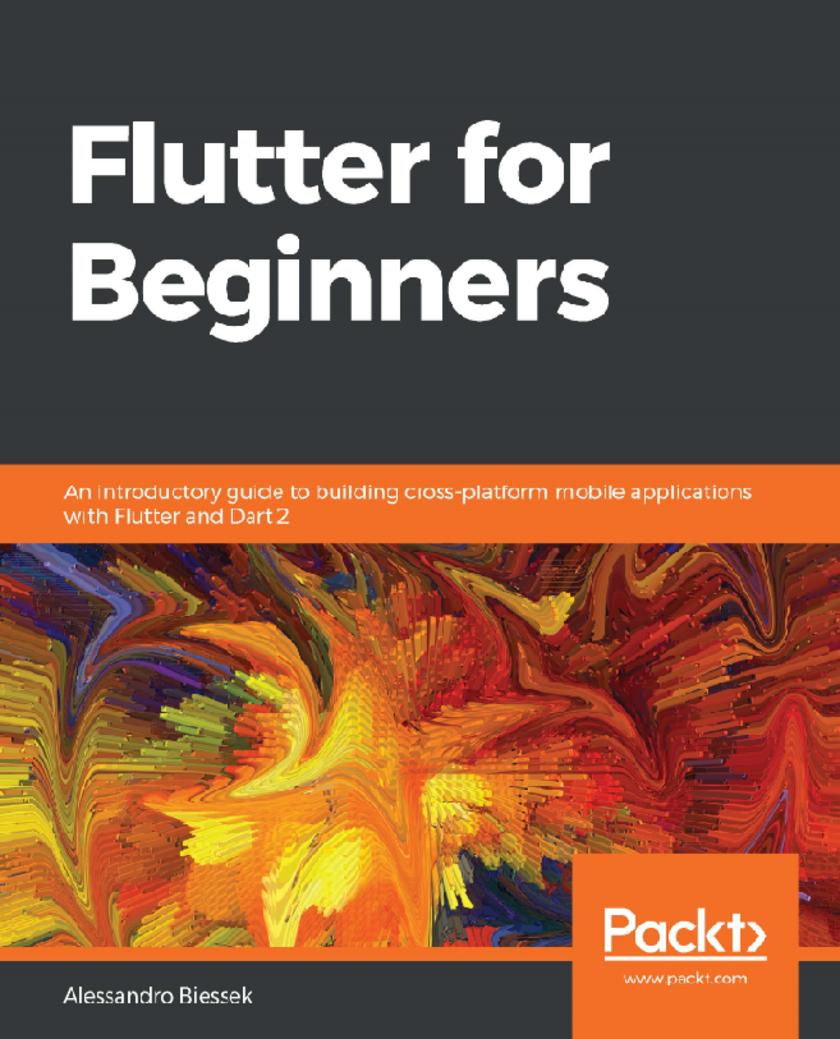
Flutter for Beginners
¥63.21
A step-by-step guide to learning Flutter and Dart 2 for creating Android and iOS mobile applications Key Features * Get up to speed with the basics of Dart programming and delve into Flutter development * Understand native SDK and third-party libraries for building Android and iOS applications using Flutter * Package and deploy your Flutter apps to achieve native-like performance Book Description Google Flutter is a cross-platform mobile platform that makes it easier to write secure and high-performance native apps for iOS and Android. This book begins by introducing you to the Flutter framework and basics of Dart. You’ll learn to set up the development environment to get started with your Flutter project. The book will guide you through designing the user interface and user input functions for your app. As you progress, you’ll explore the navigator widget to manage your app routes and understand how to add transitions between screens. You’ll then get to grips with developing your own plugin and discover how to structure good plugin code. The book will help you display a map from the Flutter app, add markers and interactions to it, and use the Google Places API. You’ll build on your knowledge by not only adding tests to create a bug-free app, but also preparing it for deployment on Apple's App Store and Google Play. In later chapters, you’ll learn to improve the user experience with advanced features such as map integrations, platform-specific code with native programming languages, and personalized animation options for designing intuitive UIs. By the end of this book, you’ll be well-versed with Dart programming and have the skills to develop your own mobile apps or build a career as a Dart and Flutter app developer. What you will learn * Understand the fundamentals of the Dart programming language * Explore the core concepts of the Flutter UI and how it compiles for multiple platforms * Develop Flutter plugins and widgets and understand how to structure good plugin code * Style your apps with widgets and learn the difference between stateful and stateless widgets * Add animation to your UI using Flutter's AnimatedBuilder component * Integrate your native code into your Flutter codebase for native app performance Who this book is for This book is for developers looking to learn Google's revolutionary framework, Flutter from scratch. No knowledge of Flutter or Dart is required. However, basic programming language knowledge will be helpful.

Advanced JavaScript
¥63.21
Gain a deeper understanding of JavaScript and apply it to build small applications in backend, frontend, and mobile frameworks. Key Features * Explore the new ES6 syntax, the event loop, and asynchronous programming * Learn the test-driven development approach when building apps * Master advanced JavaScript concepts to enhance your web developments skill Book Description If you are looking for a programming language to develop flexible and efficient applications, JavaScript is an obvious choice. Advanced JavaScript is a hands-on guide that takes you through JavaScript and its many features, one step at a time. You'll begin by learning how to use the new JavaScript syntax in ES6, and then work through the many other features that modern JavaScript has to offer. As you progress through the chapters, you’ll use asynchronous programming with callbacks and promises, handle browser events, and perform Document Object Model (DOM) manipulation. You'll also explore various methods of testing JavaScript projects. In the concluding chapters, you'll discover functional programming and learn to use it to build your apps. With this book as your guide, you'll also be able to develop APIs using Node.js and Express, create front-ends using React/Redux, and build mobile apps using React/Expo. By the end of Advanced JavaScript, you will have explored the features and benefits of JavaScript to build small applications. What you will learn * Examine major features in ES6 and implement those features to build applications * Create promise and callback handlers to work with asynchronous processes * Develop asynchronous flows using Promise chaining and async/await syntax * Manipulate the DOM with JavaScript * Handle JavaScript browser events * Explore Test Driven Development and build code tests with JavaScript code testing frameworks. * List the benefits and drawbacks of functional programming compared to other styles * Construct applications with the Node.js backend framework and the React frontend framework Who this book is for This book is designed to target anyone who wants to write JavaScript in a professional environment. We expect the audience to have used JavaScript in some capacity and be familiar with the basic syntax. This book would be good for a tech enthusiast wondering when to use generators or how to use Promises and Callbacks effectively, or a novice developer who wants to deepen their knowledge on JavaScript and understand TDD.
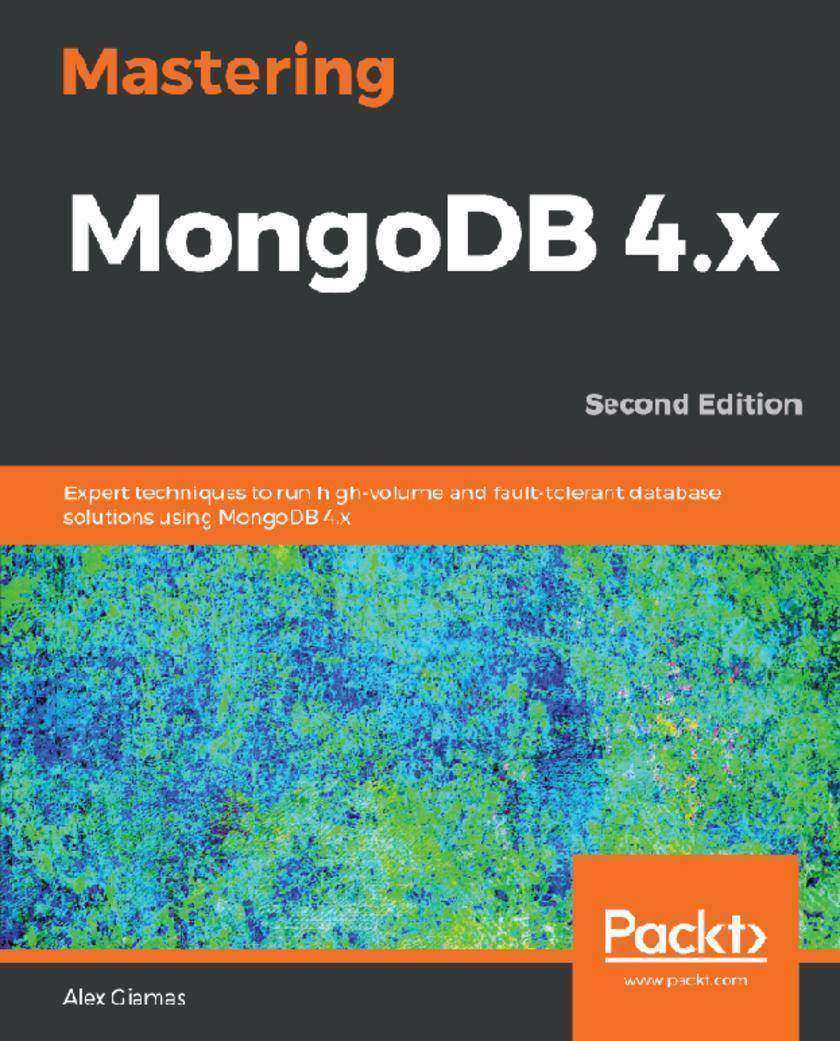
Mastering MongoDB 4.x
¥63.21
Leverage the power of MongoDB 4.x to build and administer fault-tolerant database applications Key Features * Master the new features and capabilities of MongoDB 4.x * Implement advanced data modeling, querying, and administration techniques in MongoDB * Includes rich case-studies and best practices followed by expert MongoDB developers Book Description MongoDB is the best platform for working with non-relational data and is considered to be the smartest tool for organizing data in line with business needs. The recently released MongoDB 4.x supports ACID transactions and makes the technology an asset for enterprises across the IT and fintech sectors. This book provides expertise in advanced and niche areas of managing databases (such as modeling and querying databases) along with various administration techniques in MongoDB, thereby helping you become a successful MongoDB expert. The book helps you understand how the newly added capabilities function with the help of some interesting examples and large datasets. You will dive deeper into niche areas such as high-performance configurations, optimizing SQL statements, configuring large-scale sharded clusters, and many more. You will also master best practices in overcoming database failover, and master recovery and backup procedures for database security. By the end of the book, you will have gained a practical understanding of administering database applications both on premises and on the cloud; you will also be able to scale database applications across all servers. What you will learn * Perform advanced querying techniques such as indexing and expressions * Configure, monitor, and maintain a highly scalable MongoDB environment * Master replication and data sharding to optimize read/write performance * Administer MongoDB-based applications on premises or on the cloud * Integrate MongoDB with big data sources to process huge amounts of data * Deploy MongoDB on Kubernetes containers * Use MongoDB in IoT, mobile, and serverless environments Who this book is for This book is ideal for MongoDB developers and database administrators who wish to become successful MongoDB experts and build scalable and fault-tolerant applications using MongoDB. It will also be useful for database professionals who wish to become certified MongoDB professionals. Some understanding of MongoDB and basic database concepts is required to get the most out of this book.
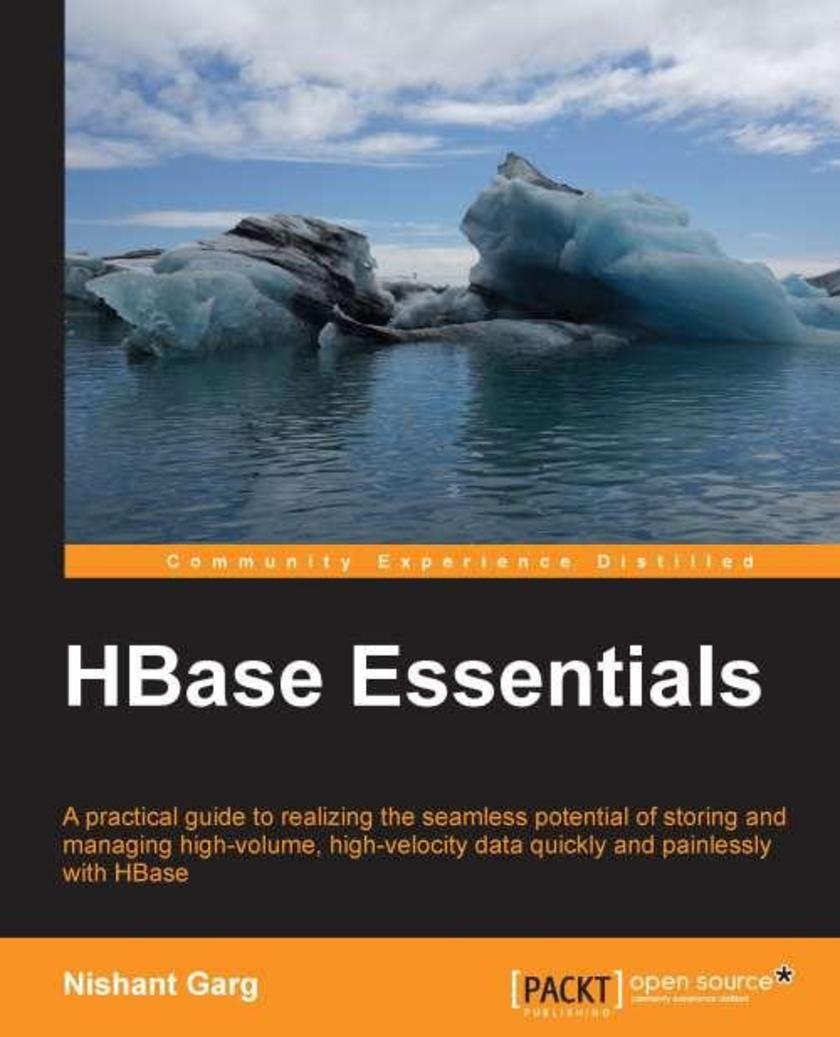
HBase Essentials
¥63.21
This book is intended for developers and Big Data engineers who want to know all about HBase at a hands-on level. For in-depth understanding, it would be helpful to have a bit of familiarity with HDFS and MapReduce programming concepts with no prior experience with HBase or similar technologies. This book is also for Big Data enthusiasts and database developers who have worked with other NoSQL databases and now want to explore HBase as another futuristic, scalable database solution in the Big Data space.
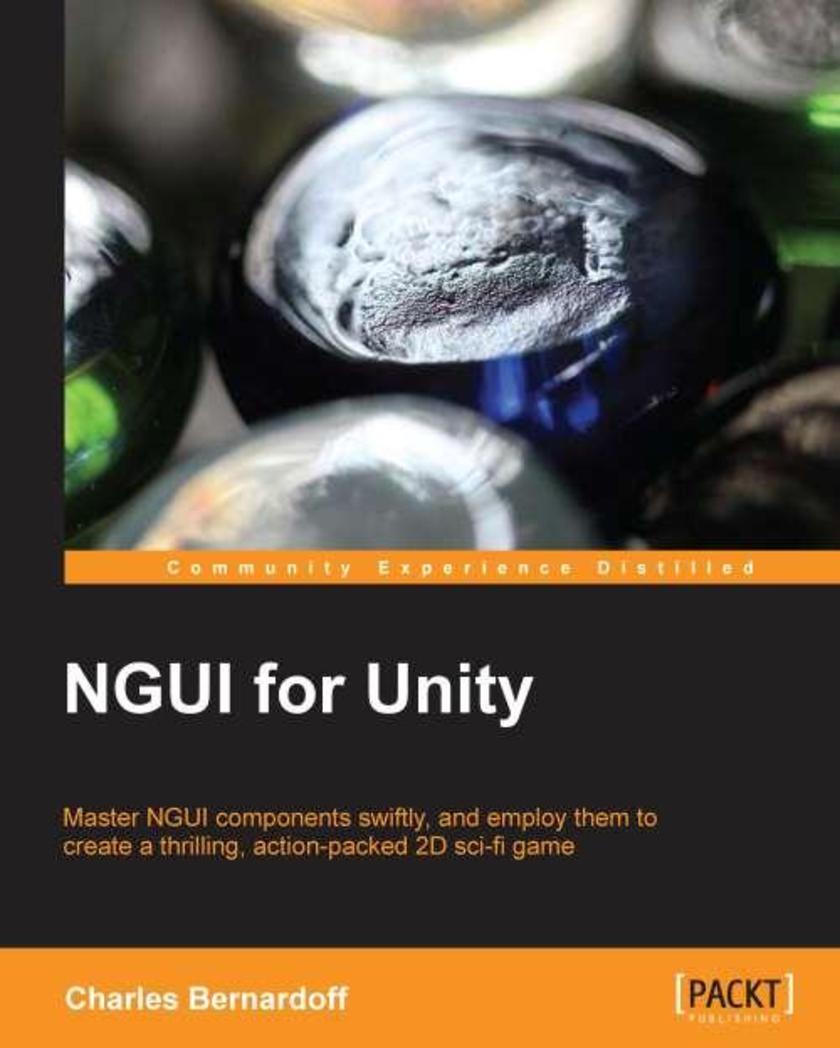
NGUI for Unity
¥63.21
An easytofollow, stepbystep tutorial focusing on practical situations and manipulations, guiding you to create a concrete Graphical User Interface and a simple 2D game. If you are a Unity 3D developer looking forward to learn NGUI for Unity, then this book is for you. Prior knowlege of C# *ing is expected. Additional knowledge of Unity 3D Editor, GameObject and creating/adding *s to GameObject would be beneficial; however, no prior knowledge of NGUI is required.

Getting Started with Beautiful Soup
¥63.21
This book is a practical, handson guide that takes you through the techniques of web scraping using Beautiful Soup. Getting Started with Beautiful Soup is great for anybody who is interested in website scraping and extracting information. However, a basic knowledge of Python, HTML tags, and CSS is required for better understanding.
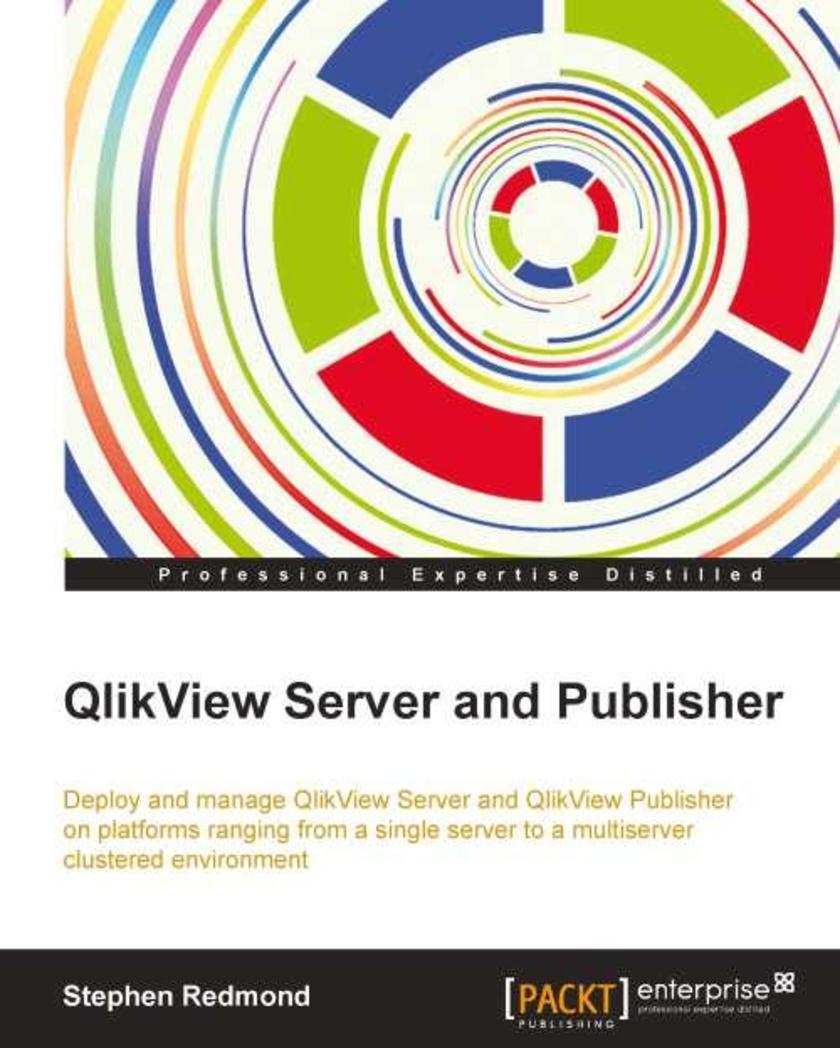
QlikView Server and Publisher
¥63.21
This is a comprehensive guide with a stepbystep approach that enables you to host and manage servers using QlikView Server and QlikView Publisher. If you are a server administrator wanting to learn about how to deploy QlikView Server for server management,analysis and testing, and QlikView Publisher for publishing of business content then this is the perfect book for you. No prior experience with QlikView is expected.
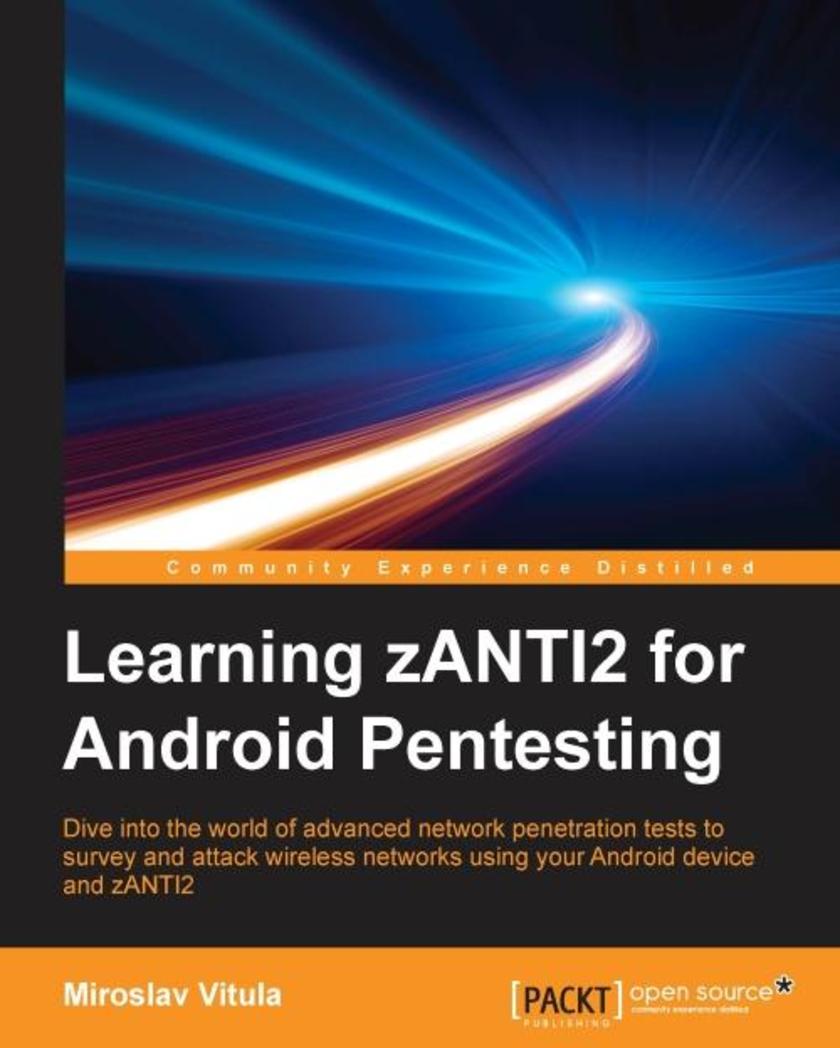
Learning zANTI2 for Android Pentesting
¥63.21
The book is intended for those who want to know more about network penetration tests and have no prior experience, as well as for those who are experienced in network systems and are interested in discovering more about this topic.
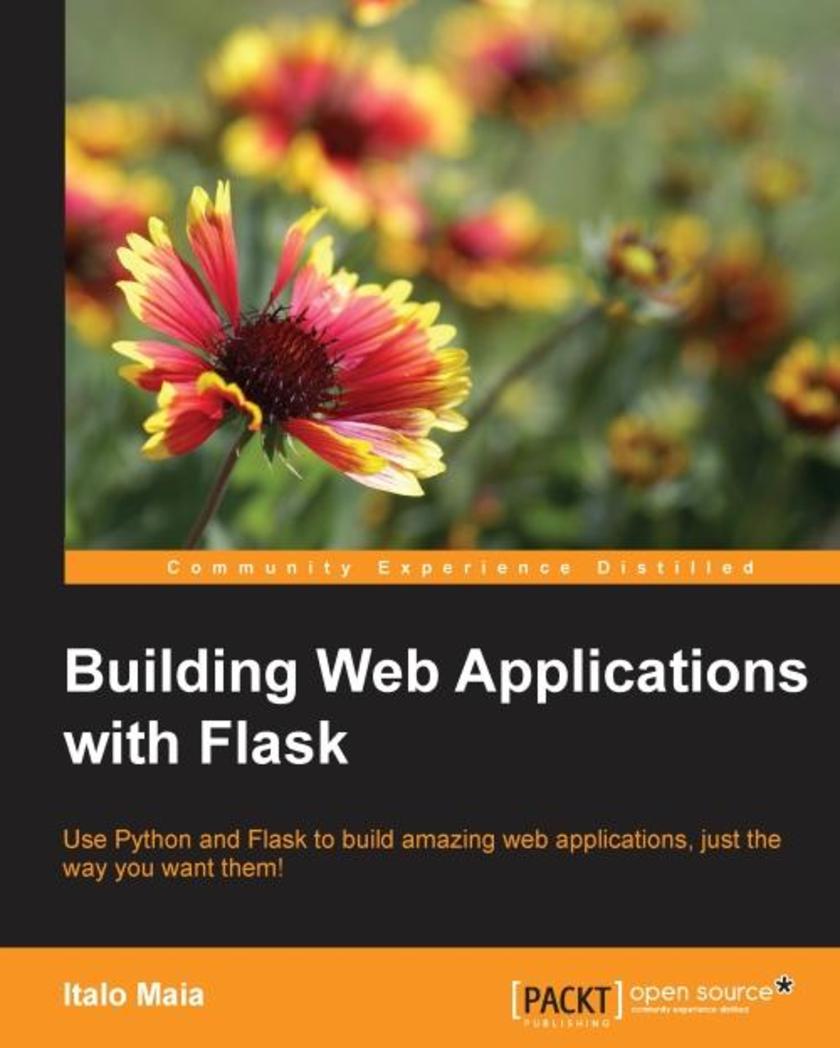
Building Web Applications with Flask
¥63.21
If you are a Python web developer who wants to learn more about developing applications in Flask and scaling them with industry-standard practices, this is the book for you.
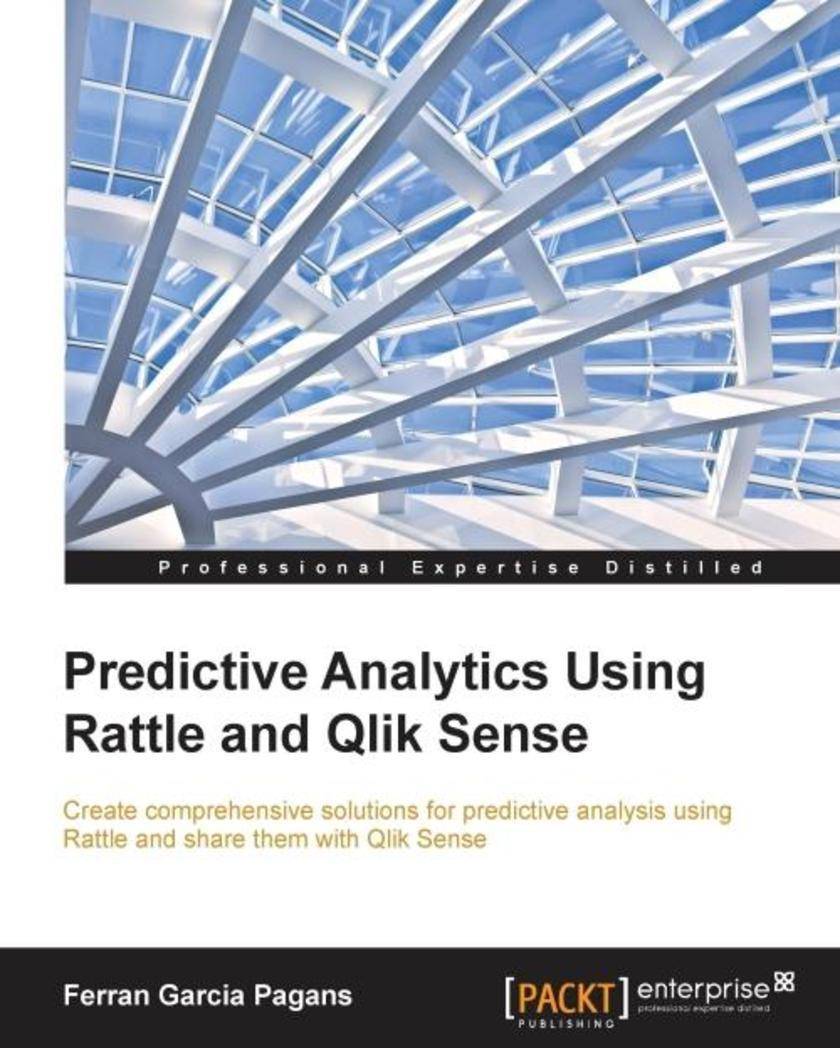
Predictive Analytics Using Rattle and Qlik Sense
¥63.21
If you are a business analyst who wants to understand how to improve your data analysis and how to apply predictive analytics, then this book is ideal for you. This book assumes you have some basic knowledge of statistics and a spreadsheet editor such as Excel, but knowledge of QlikView is not required.

PHP Team Development
¥63.21
This book looks into PHP projects mainly from an enterprise view. The author's experience enables him to give you an overall picture of PHP projects and discuss factors that contribute to project success in a clear and precise manner. Each chapter focuses specifically on how the techniques covered will make team work easier. Examples (rather than abstract best practices) are used to illustrate the practical benefits. This book is for PHP developers who work in teams on complex PHP projects. With this book in hand, it is easy to discover the secrets of successful PHP projects that meet today's complex enterprise demands. This book can also be useful for project managers who are looking to be successful with PHP projects. Those who are stakeholders in PHP projects, such as clients, or those who want to sponsor PHP projects, can also learn what to expect and how to deal with a PHP project team with this book.
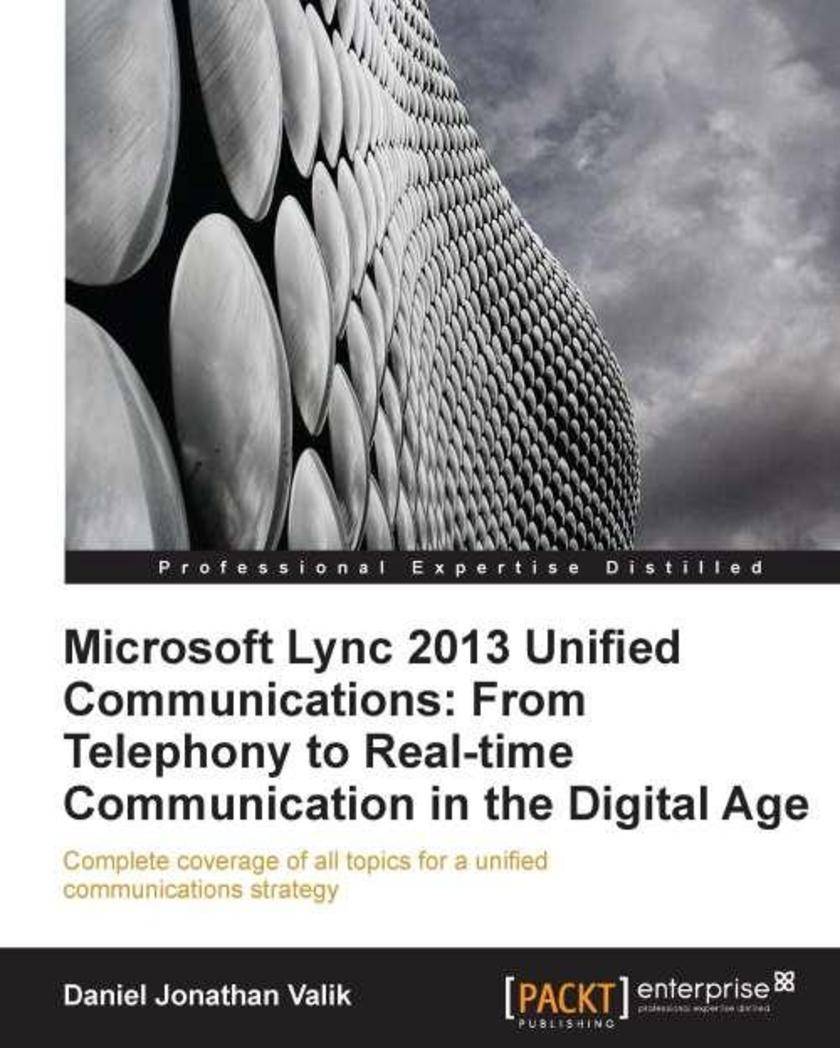
Microsoft Lync 2013 Unified Communications
¥63.21
This is a tutorial guide to gain in-depth knowledge such as realizing projects to migrate traditional telephony to Unified Communications inside an organization. This book is targeted at three audiences: business decision makers, technical advocates, and IT decision makers. As this is also a fundamental book on real time collaboration technology, it is also suitable for anyone who is interested in the future of communications.
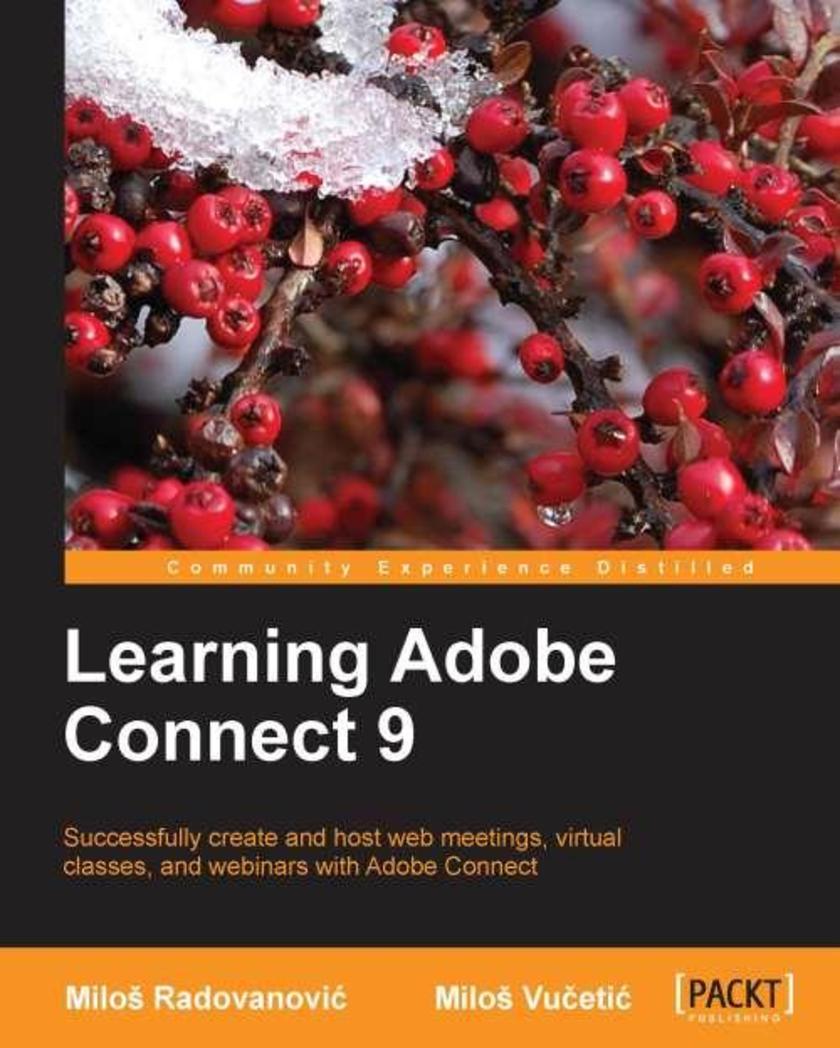
Learning Adobe Connect 9
¥63.21
Written in an engaging, easy-to-follow style, Learning Adobe Connect 9 is a practical guide that will help you master the use of this web conferencing platform and its most important features. This book is ideal for users who would like to start utilizing Adobe Connect for web meetings, e-learning, and webinars. Those who are looking to learn Connect and get up to speed with using all of its features would find this book extremely useful.
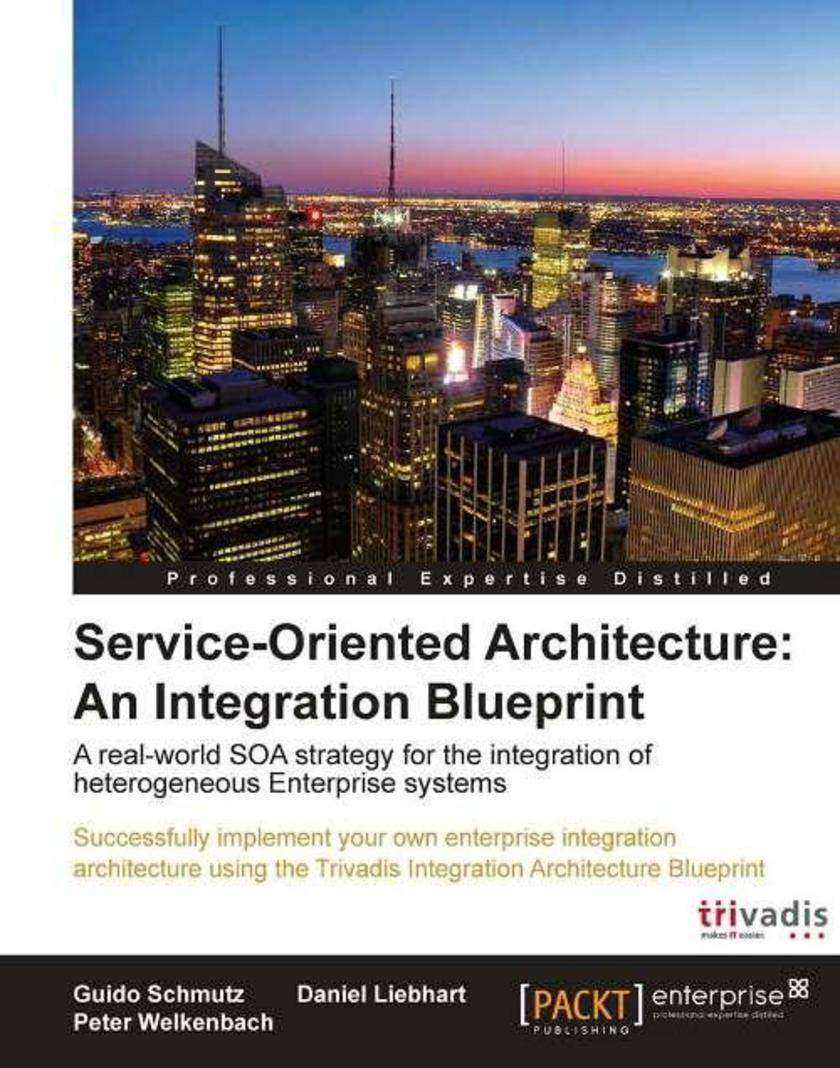
Service Oriented Architecture: An Integration Blueprint
¥63.21
A theoretical guide, this book provides detailed and structured explanations and visualizations of the Trividas Integration Architecture Blueprint, showing you the strategy to implement your own integration projects. It draws on real-world integrations at an architectural level, and explores both product-neutral and specific integration scenarios. If you are an IT architect or manager who is responsible for any aspect of operating integration solutions, and you want to learn how to implement integration architectures in practice with the help of the Trivadis Integration Architecture Blueprint, then this book is for you. A comprehensive understanding of SOA is required, though previous knowledge of the Trivadis Blueprint is not necessary. Less experienced specialists who have not yet dealt with integration will benefit greatly from this book by first gaining knowledge of concepts and terminology used in the context of integration architecture, while those already familiar with such expertise can move straight to discovering the base technologies associated with implementing solutions based on the Blueprint, and getting to grips with the Blueprint's structure itself. If you want to assess the solutions from different vendors and ultimately achieve comprehensive SOA integration results using the Trivadis Integration Architecture Blueprint, then this book is ideal for you.




 购物车
购物车 个人中心
个人中心



